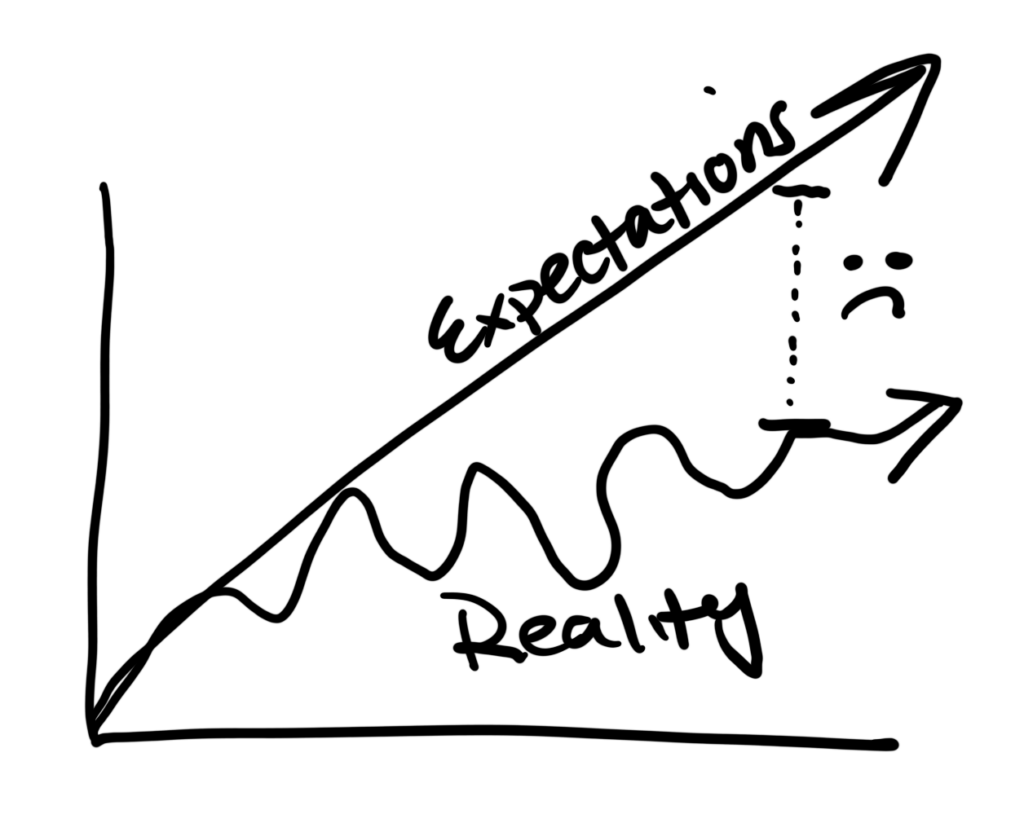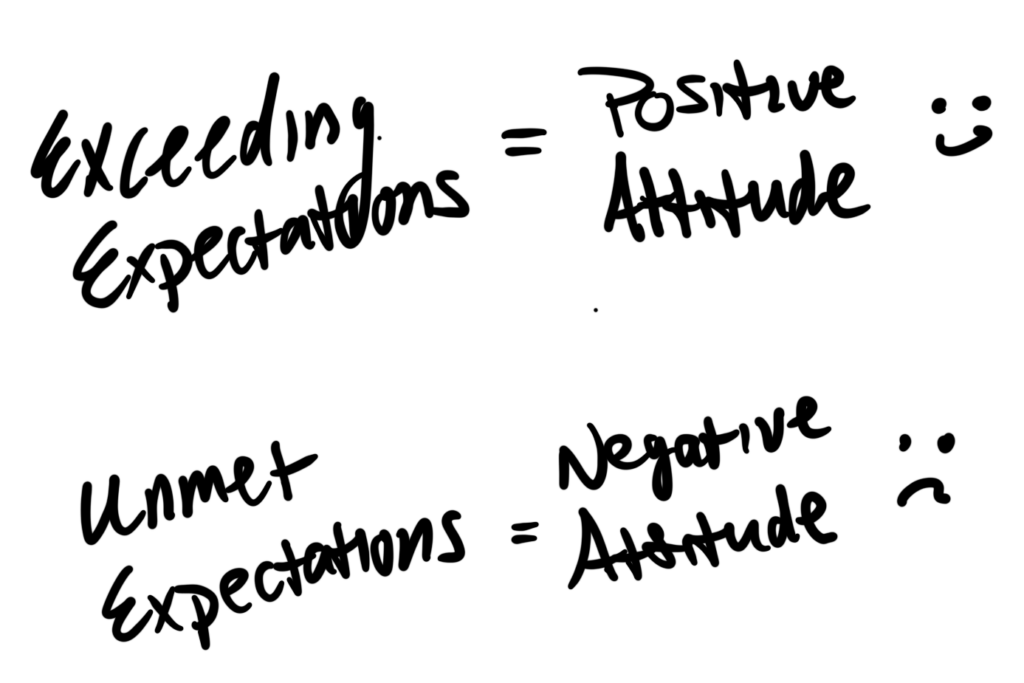Expectations are simultaneously normal and dangerous.
Normal because we form expectations every day: from what we expect to accomplish in a day, how good a dinner will be, or what we expect from a spouse or friend.
Dangerous because we often formulate unrealistic expectations from biases, emotions, and incomplete information.
When matching actual outcomes to created expectations, we form attitudes and responses.
What does this have to do with investing? First, a story.

We had packed spaghetti noodles and sauce for that night’s dinner. It was as basic as could be but sitting down on a rock and eating that pasta seemed like the best meal I had ever eaten.
My wife is an incredible cook, so I’m spoiled with good food regularly. Any other day, under different circumstances, that meal would’ve been classified as one of my worst! But my standard was low that day. Gross spaghetti recharged me physically and mentally. Expectations determine attitudes.
Why are realistic expectations important?
A negative attitude will naturally produce a negative response. Perhaps it is easier to see this in children. A bad attitude often leads to bad behavior. We, as adults, are not much different.
We can avoid or minimize a negative response by either:
- Maturing to respond positively even if our expectations are unmet.
- Forming better expectations in the first place!
To put this simply, mismatched expectations from reality can lead to poor decisions.
This brings us to investing!
Because of the inherent inconsistency of stock returns, expectations and outcomes are constantly compared.

However, moving to cash during the “.com” bubble wasn’t the worst of it. A few short years later the stock market had another run up. In turn, many people were ready to re-deploy their cash into the markets, only to see another swift downturn during the 2008 meltdown.
Expected stock returns of investors today
Investors expect +14.5% annual long-term stock returns above inflation, according to the Natixis 2021 Global Survey of Individual Investors.
By comparison, financial professionals surveyed estimated yearly returns of 5.3% above inflation.
Investment management company, Vanguard, has estimated U.S. stocks to return an annualized 2.3%-4.3% over the next 10 years before inflation! Their low estimates are based on currently high valuations.
Investors listed volatility as the number one investment concern globally and in the U.S., the Natixis study found.
Simultaneously expecting significantly higher than average returns and citing volatility as the top concern are a recipe for unmet expectations.
How to set realistic investment return expectations
It starts with data.
What has history taught us for expected stock returns?
For historical comparison, the S&P 500 (measure of the U.S. stock market) returned an average of 9.98%* from 1928 to 2021 before inflation. (Source: NYU Stern, Aswath Damodaran)
Ensure the proper comparison.
As the saying goes, “Don’t compare apples to oranges.”
Expecting reasonable historical stock returns is a start, but do you own other asset classes like bonds? In other words, allocations to anything that is “different” should expect different results.
This applies even to investing in stocks in a different fashion, perhaps more concentrated than the overall market or diversifying globally. Expect divergent returns (“tracking error”) from the overall U.S. stock market measures.
In this video, “Why You Should Understand Tracking Error When Investing,” Alex Okugawa and I explain that tracking error, despite how it sounds, is not a bad thing. But recognize the potential for tracking error to become a better investor.
If you are looking for a much deeper dive on tracking error, “How Portfolio Construction Impacts the Reliability of Outcomes” by Jack Vogel, PhD at Alpha Architect is excellent.
Diversification is helpful to spread out risk, but investors will often forget that the divergence in returns is an expected part of the plan.
What would else could affect the expected outcome?
Timeframe is a major factor when assessing expectations. Expecting an average stock market return of 10% when you are investing for a short timeframe is less certain. Decades of market cycles create these averages.
As Ben Carlson points out, “If we look at the calendar year returns plus or minus 2% from the 10% average (so 8% to 12%) this has happened in just 5 calendar years. So around 5% of all years since 1926 have seen average returns.”
Use professional guidance.
Professionals cannot consistently prognosticate what the market will do. But an experienced investment advisor can help coordinate these expectations and align a plan based on your needs and guide you through various market cycles.
Summary
The investment world features a lot of noise that can attempt to rattle your expected stock returns
- Form realistic stock return expectations based on historical data, proper comparisons, and factors such as time.
- Learn to respond objectively even when your expectations are not met.
Photo by Yuriy Chemerys on Unsplash
*Return has been updated since original post for clarity and broader time period.
Want tax, investment, and planning strategies like this right to your inbox? Subscribe below!

